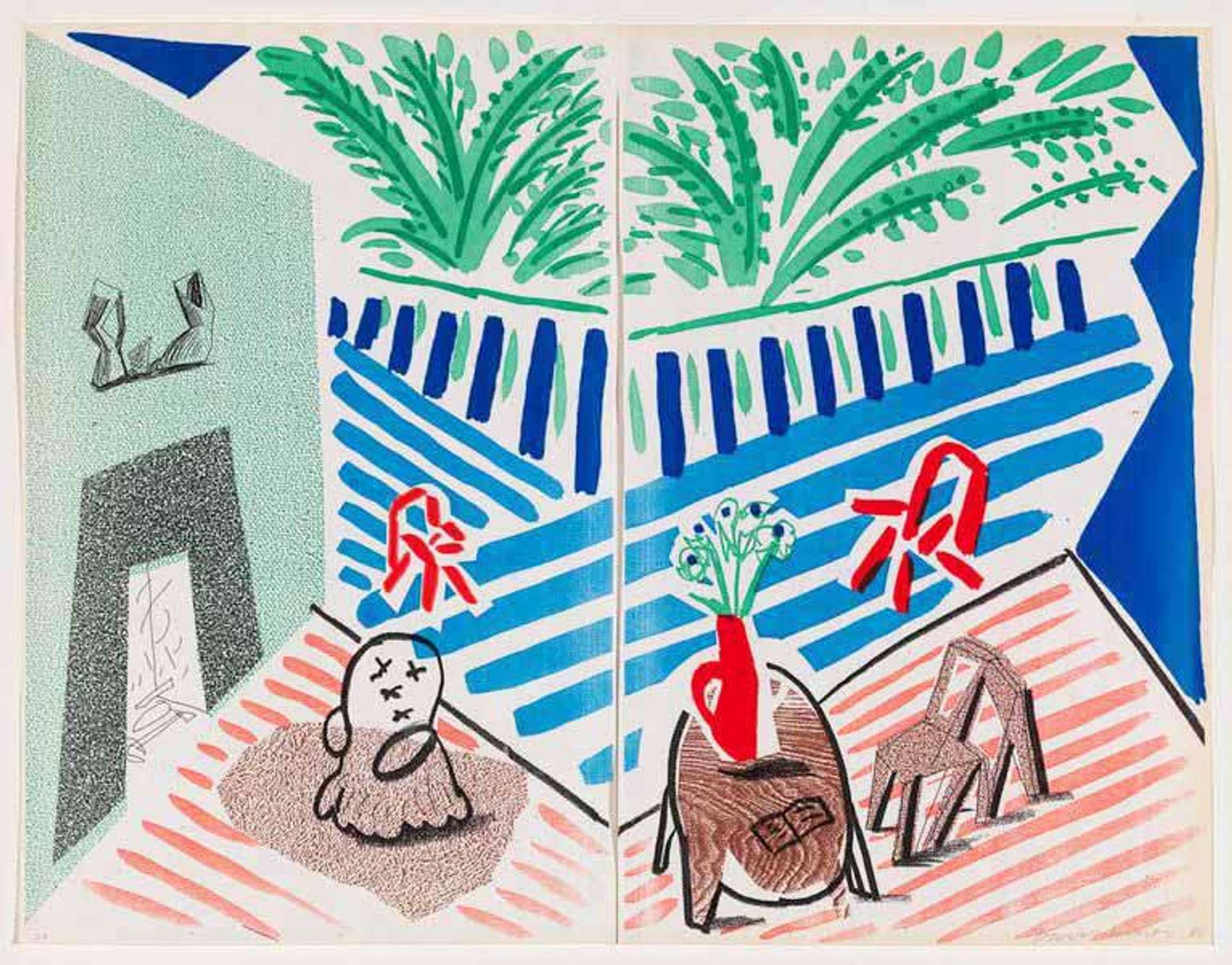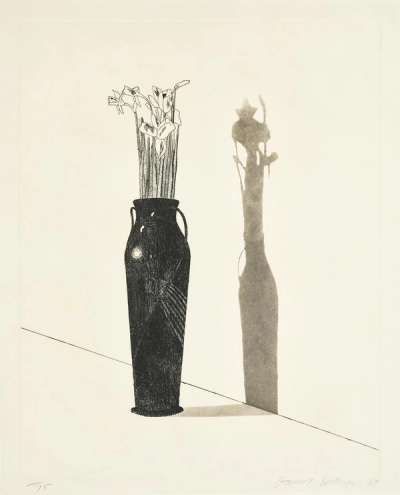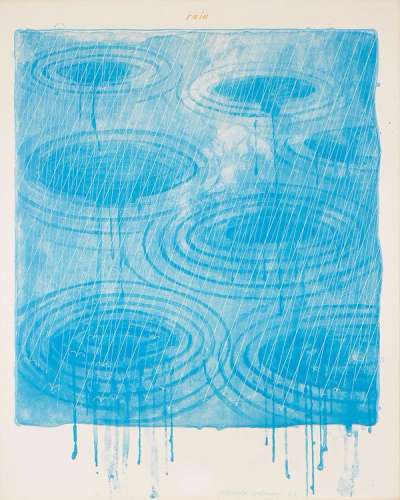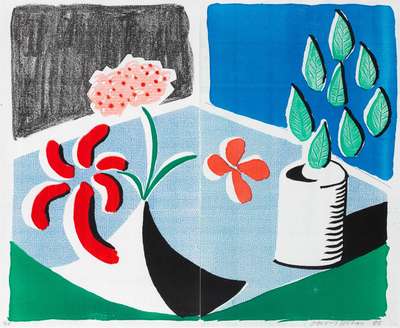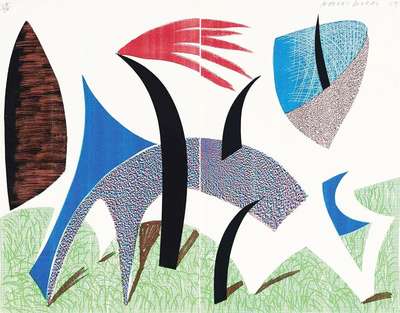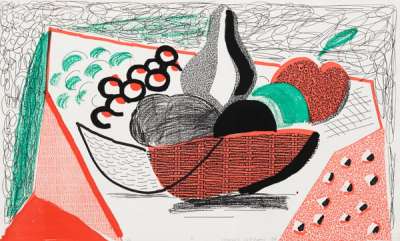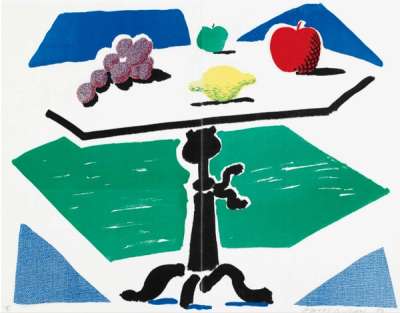David Hockney's Techniques: Innovating Printmaking and Visual Storytelling

 Ian And Heinz © David Hockney 1986
Ian And Heinz © David Hockney 1986
David Hockney
654 works
Key Takeaways
David Hockney, a pioneer in contemporary art, has continually pushed the boundaries of printmaking through his innovative techniques. He masterfully blends traditional methods, such as lithography and etching, with modern technologies such as Xerox photocopying and photographic collages. Hockney’s relentless experimentation and integration of diverse techniques have significantly impacted the evolution of printmaking.
David Hockney is renowned as one of the most innovative artists in contemporary art, particularly in the realm of printmaking. Over his extensive career, Hockney has consistently pushed the boundaries of traditional art forms, earning a reputation for his relentless exploration and mastery of diverse printmaking techniques. From traditional techniques used in his A Hollywood Collection, to more contemporary methods such as his Xerox prints, Hockney’s ability to adapt both traditional and modern approaches has allowed him to develop a distinctive artistic vision, one that continuously evolves with the integration of new technologies and methods.
Traditional Techniques
Lithography: A Hollywood Collection (1965)
Lithography is a printing process where an artist creates an image on a flat surface, typically stone or metal, which is then treated with a greasy substance and inked to produce multiple prints from the original drawing. Lithography allowed Hockney to playfully experiment with contemporary art, and the technique’s ability to render intricate details and subtle textures was instrumental in conveying the layered meanings and visual richness of this innovative series.
Hockney employed this method with remarkable skill in his 1965 series, A Hollywood Collection, the first set of lithographs he produced with printer Ken Tyler at the Gemini G.E.L. workshop in Los Angeles. In this series, Hockney harnessed the versatility of lithography to capture the fine details and varied textures that define his work, with each print in the series reflecting his unique artistic vision. Picture Of A Landscape In An Elaborate Gold Frame 2 (1965) is a key piece in A Hollywood Collection. In this work, Hockney employs the trompe l’oeil technique, an approach he had previously explored and would continue to revisit throughout his career. The print appears to depict a simple tree, but the viewer is intentionally distanced from the subject by the ornate gold frame that gives the piece its title. This frame creates the illusion that we are viewing not the tree itself, but a picture of the tree, offering a meta-commentary on representation and the nature of art collecting, presenting the work as part of a fictional collection belonging to a Hollywood star. This deliberate layer of artifice contrasts with the natural subject of the tree, highlighting Hockney's playful approach to printing.
Etching: A Rake’s Progress
Etching is a printmaking technique where an image is meticulously incised onto a metal plate using acid, allowing the artist to create intricate designs that are then inked and pressed onto paper to produce multiple prints. This method, known for its ability to capture fine details and varying line qualities, has been a favoured medium for artists exploring narrative art. Hockney’s A Rake’s Progress (1961–63) exemplifies the versatility of etching, as he reinterprets William Hogarth’s 18th-century series through his own contemporary lens.
While Hogarth’s original series offered a satirical portrayal of moral decline, Hockney’s A Rake’s Progress introduces a modern twist, presenting himself as the ‘rake’, a young artist navigating the complexities of city life. The minimalist compositions and strategic use of vibrant colours in Hockney’s etchings stand in stark contrast to Hogarth’s detailed scenes, highlighting Hockney’s innovative approach to form and storytelling. By infusing the series with his distinctive style, Hockney not only pays homage to the classic narrative, but also transforms it into a dynamic exploration of personal and societal themes.
Xerox Photocopy Art
Xerox Photocopying: Home Made Prints (1980s)
In the 1980s, Hockney revolutionised printmaking by pioneering the use of Xerox photocopy machines to create original artworks. Departing from traditional techniques like etching and lithography, Hockney embraced this everyday office technology to work with greater speed, spontaneity, and independence. While he valued the collaborative process with master printers for projects like Friends, he ultimately sought more direct control over his work. The Xerox machine offered a unique solution, allowing him to bypass the complexities of colour printing in etching and to experiment freely with layers and textures.
Hockney's experimentation with photocopying led to the creation of Home Made Prints, a series of over 40 prints that showcased the possibilities of this new medium. By using the Xerox machine as both a camera and a printing press, Hockney was able to flatten space in his images, a concept he had been exploring since his early days in photography and painting. He could draw or paint directly onto paper, then feed the sheet through the copier multiple times, swapping ink cartridges to add layers of colour.
This process allowed him to create prints that were not merely copies of existing works, but original pieces that could only exist in their final form through this method. Hockney described this approach as the closest he had ever come in printmaking to the immediacy of painting, enabling him to quickly evaluate, alter, and refine his work in a matter of seconds. Through Home Made Prints, Hockney pushed the boundaries of artistic evolution, demonstrating his relentless drive to innovate and experiment with new technologies.
Photographic Collages
Joiners: My Mother Sleeping, Los Angeles (1982)
Hockney's Joiners series represents a groundbreaking approach to photographic collages, where he meticulously pieces together multiple Polaroid photographs or printed photos to form a composite image. These works blend elements of photography and painting to create a unique form of visual storytelling. An exemplary piece from this series is My Mother Sleeping, Los Angeles (1982), which depicts Hockney’s mother, Laura, peacefully asleep in an armchair during a visit to his LA home. This work, released in a limited edition of 20, captures the stillness and introspection of the period following the death of Hockney’s father, Kenneth, in the same year.
Blending Photography with Fine Art
Hockney’s Joiners blur the boundaries between photography and fine art, creating compositions that are both fragmented and cohesive. In My Mother Sleeping, Hockney departs from his typical multi-perspectival approach, instead focusing intently on his mother to achieve a level of detail that conveys reverence and affection. Unlike other Joiners that capture movement by shifting focus across different elements of a scene, such as The Ashtray, Sunday Morning, Tokyo (1983), this piece is marked by a stillness that reflects the artist’s deep contemplation. Through this careful assembly of individual images, Hockney preserves a tender moment with his mother, demonstrating how his Joiners transcend traditional photography to evoke the depth and emotion typically associated with painting.
The Mastery and Innovation of David Hockney
Hockney's relentless experimentation with various printmaking techniques has left an indelible mark on contemporary art, inspiring countless artists to push the boundaries of their own creative practices. His ability to seamlessly blend traditional methods, such as lithography and etching, with modern technologies like Xerox photocopying and photographic collages, has redefined what printmaking can achieve. Hockney’s prints are celebrated not only for their technical mastery but also for their innovative approach, which continues to captivate audiences and influence the direction of visual arts today.






